Tyrosine Kinase
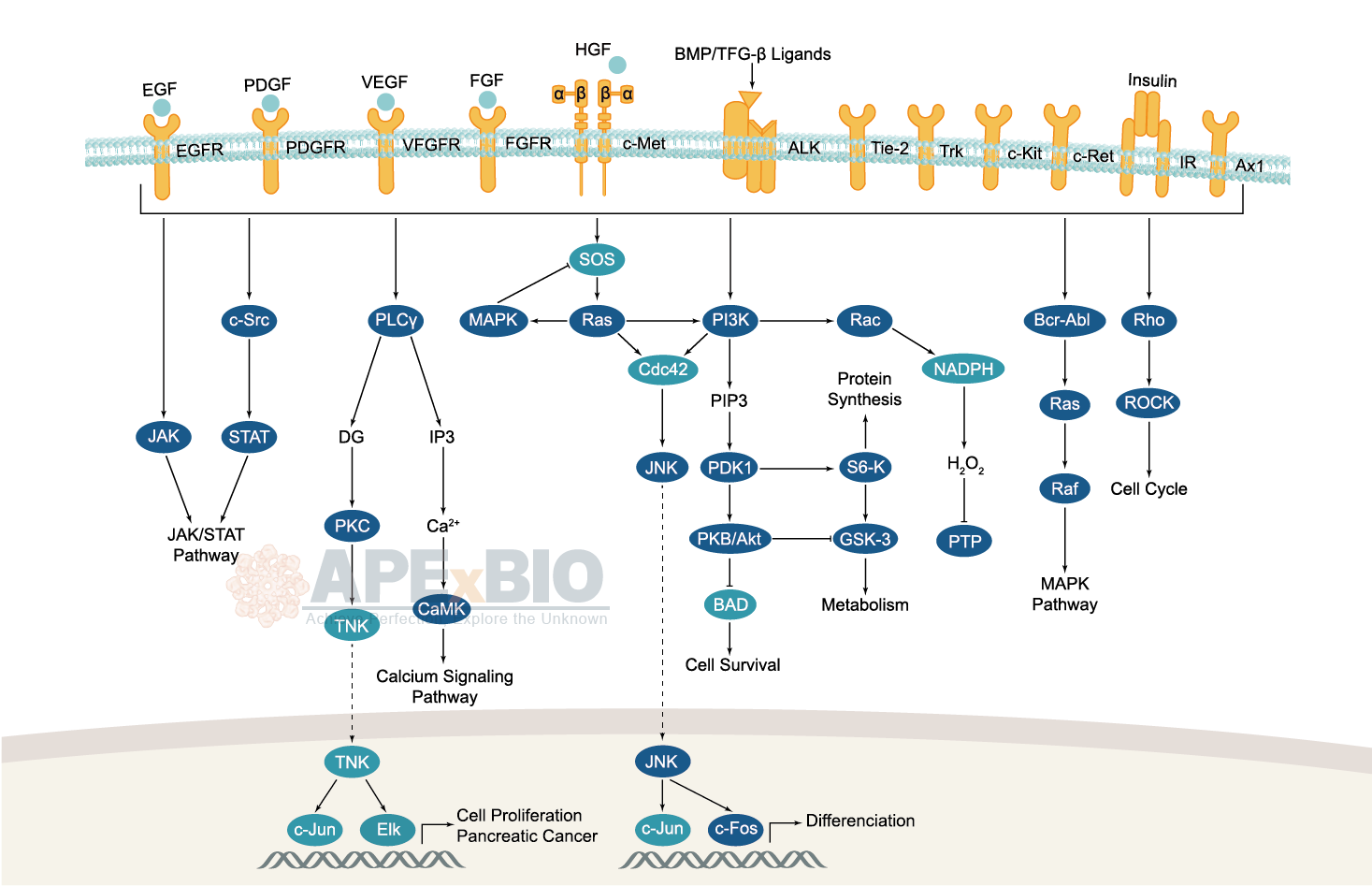
Receptor tyrosine kinases bind to extracellular ligands/growth factors, which promotes receptor dimerization and autophosphorylation of receptor tyrosine residues. This triggers a cascade of downstream events through phosphorylation of intracellular proteins that ultimately transduce the extracellular signal to the nucleus, causing changes in gene expression. Receptor tyrosine kinases include EGFR/ErbB, PDGFR, VEGFR, FGFR and MET subfamilies etc. Dysfunctions in tyrosine phosphorylation are linked to oncogenic transformation. In additions, various adaptor and effector proteins couple to carboxy-terminal of an active kinase. For instance, binding of the GRB2 adaptor protein activates EGFR and MAPK/ERK signaling.
Non-receptor tyrosine kinases involve many well-defined proteins (e.g. the Src family kinases, c-Abl, and Jak kinases) and other kinases which regulates cell growth and differentiation. For example, Src family kinases are curial for activating and inhibitory pathways in the innate immune response.
-
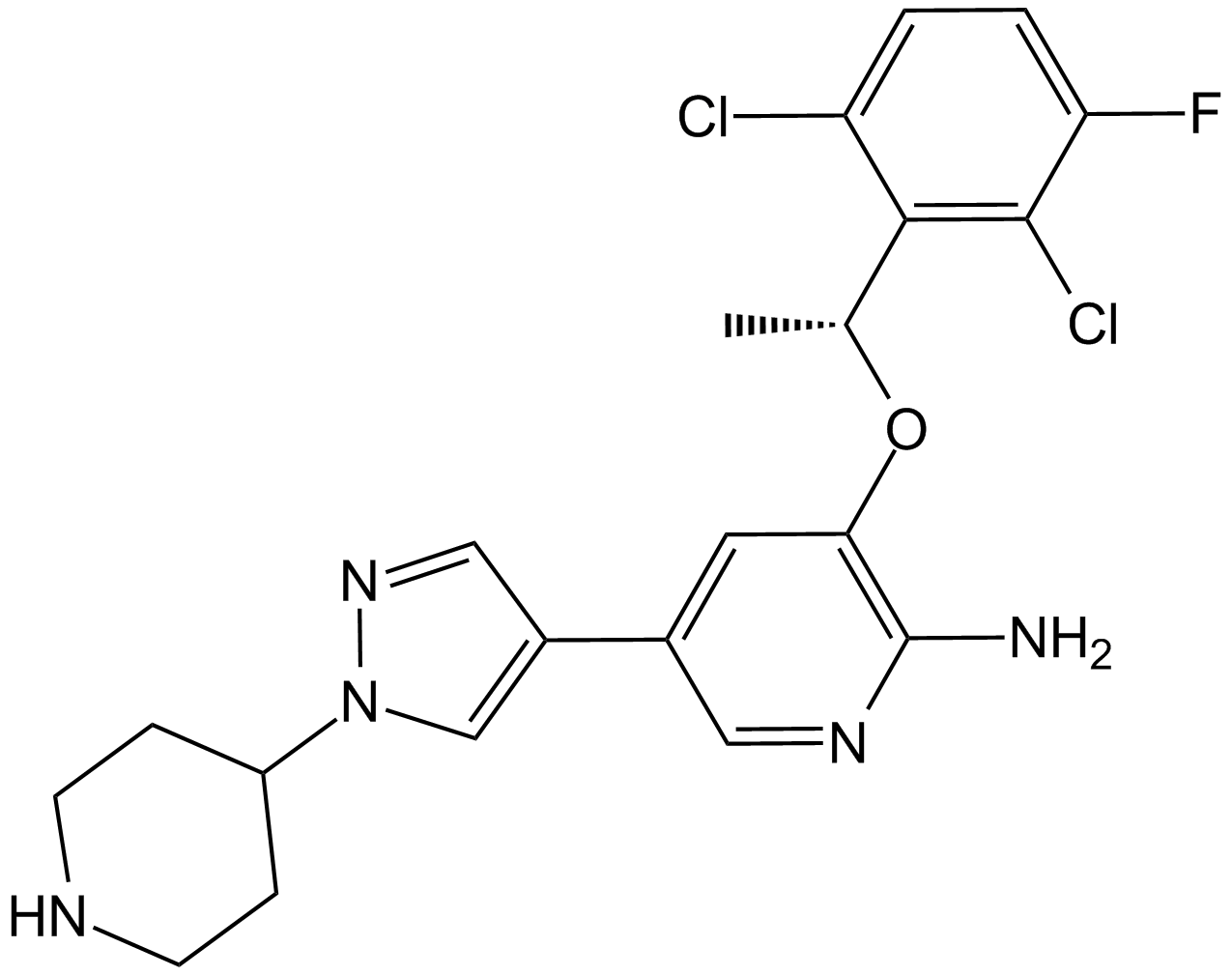 A3020 (R)-Crizotinib2 CitationTarget: c-METSummary: C-MET/ALK inhibitor,potent and ATP-competitve
A3020 (R)-Crizotinib2 CitationTarget: c-METSummary: C-MET/ALK inhibitor,potent and ATP-competitve -
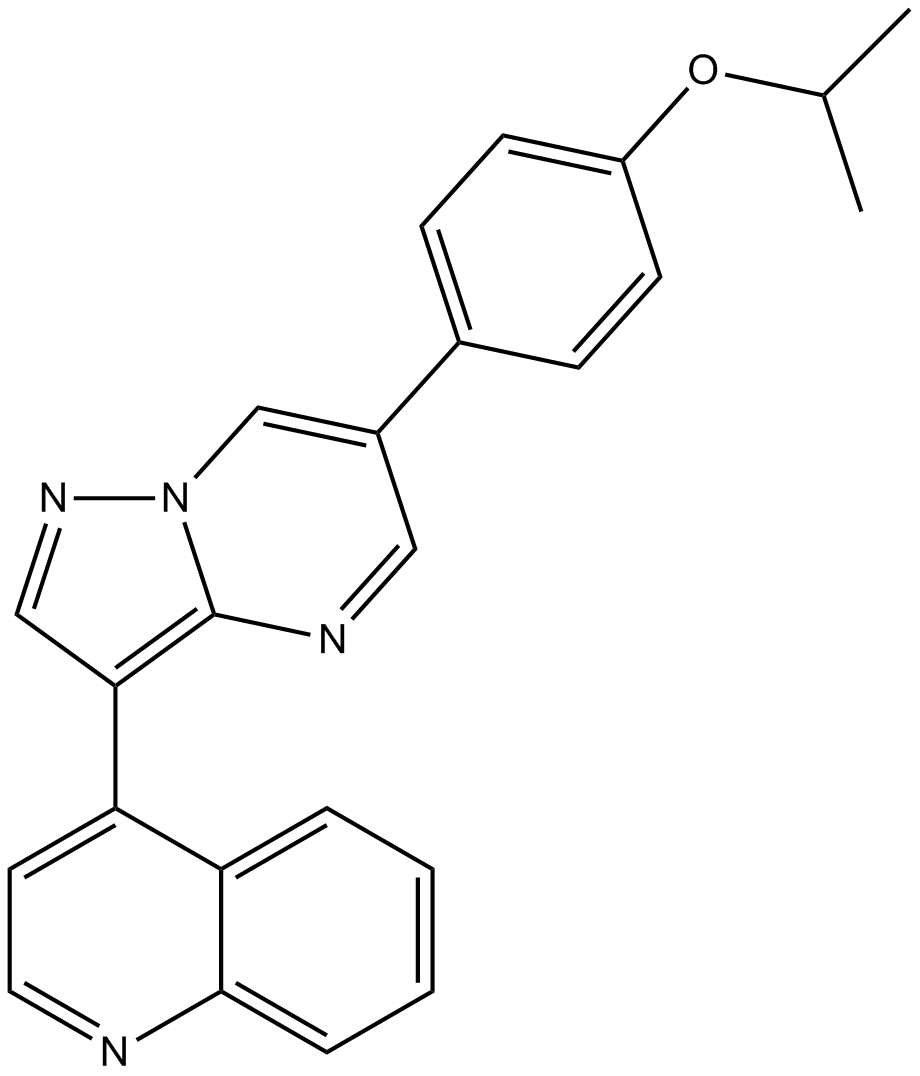 B3686 DMH-1Target: BMP and Other Activin ReceptorsSummary: Selective BMP ALK2 receptor
B3686 DMH-1Target: BMP and Other Activin ReceptorsSummary: Selective BMP ALK2 receptor -
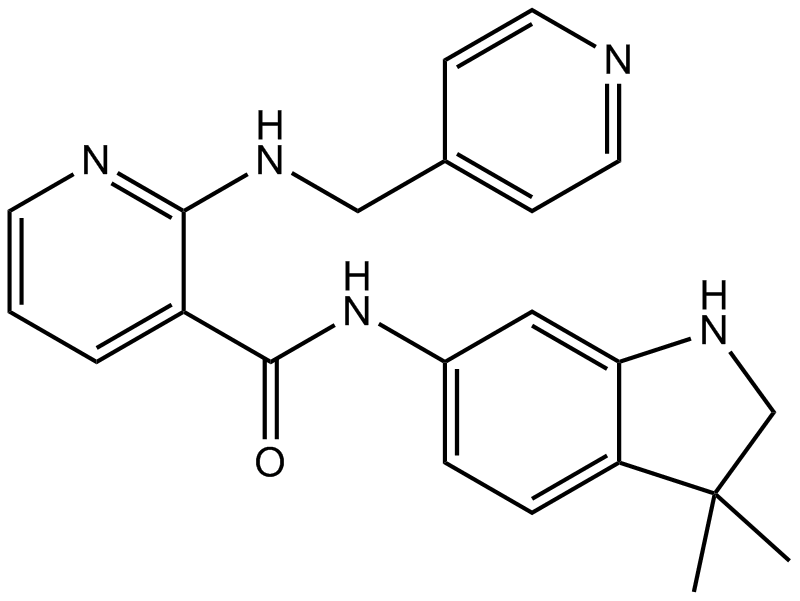 A3632 MotesanibTarget: VEGFRSummary: Inhibitor of Flk-1/Flt-4/PDGFR-/c-Kit
A3632 MotesanibTarget: VEGFRSummary: Inhibitor of Flk-1/Flt-4/PDGFR-/c-Kit -
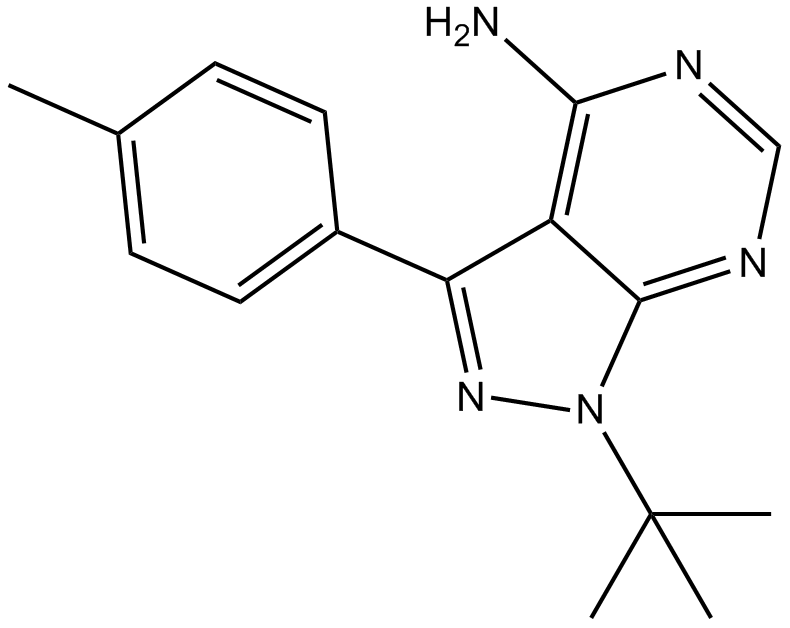 A8215 PP 1Target: Src|EGFR|JAK|ZAP-70Summary: Src family tyrosine kinase inhibitor
A8215 PP 1Target: Src|EGFR|JAK|ZAP-70Summary: Src family tyrosine kinase inhibitor -
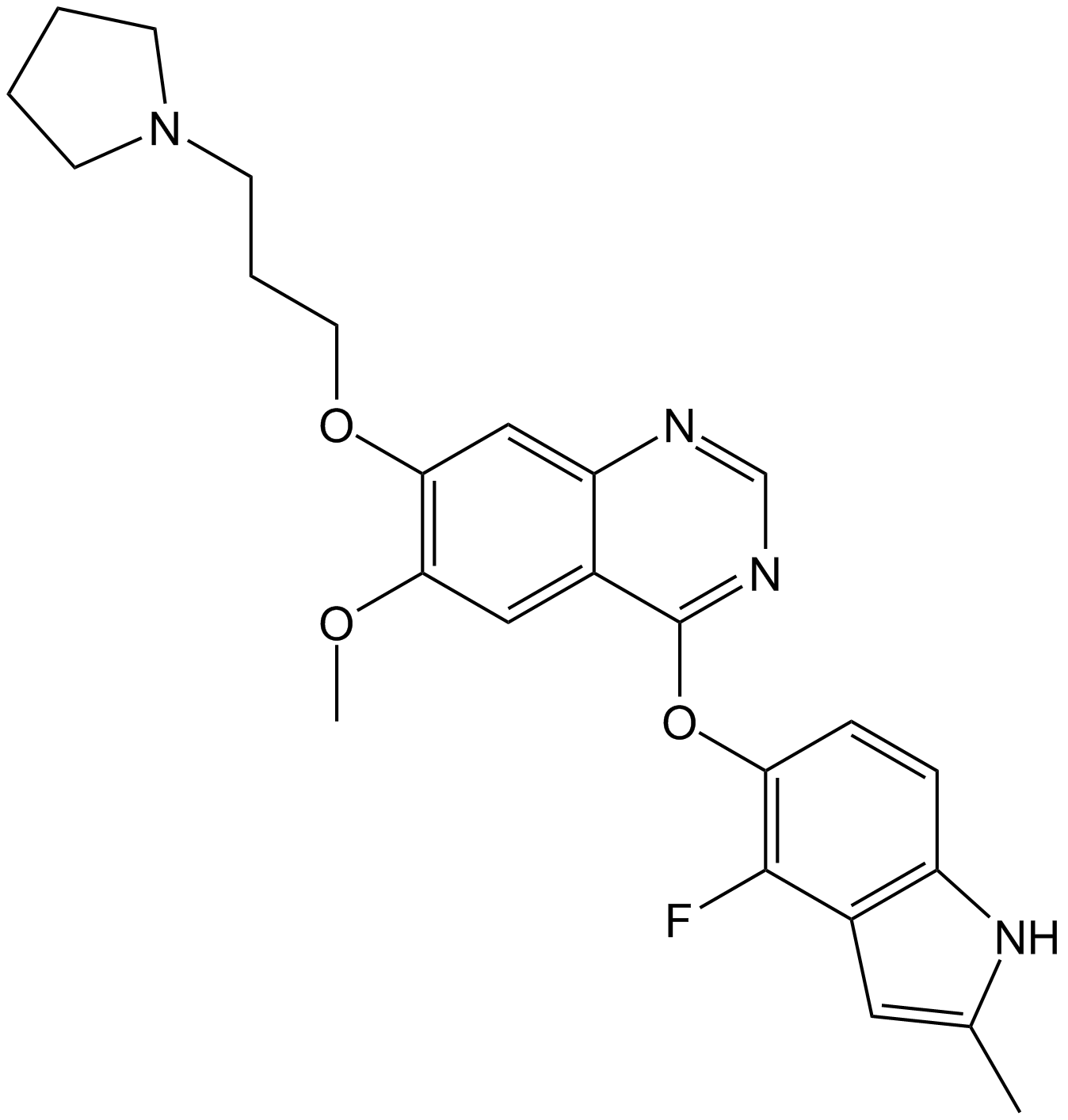 A1882 Cediranib (AZD217)Target: VEGFRSummary: VEGFR inhibitor receptor,highly potent
A1882 Cediranib (AZD217)Target: VEGFRSummary: VEGFR inhibitor receptor,highly potent -
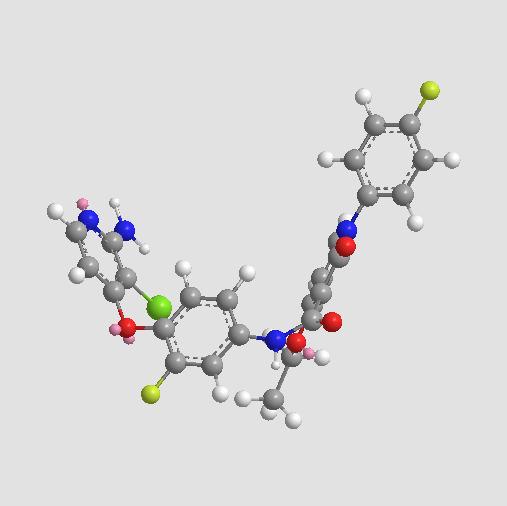 A5703 BMS-777607Target: METSummary: C-Met inhibitor, potent and selective
A5703 BMS-777607Target: METSummary: C-Met inhibitor, potent and selective -
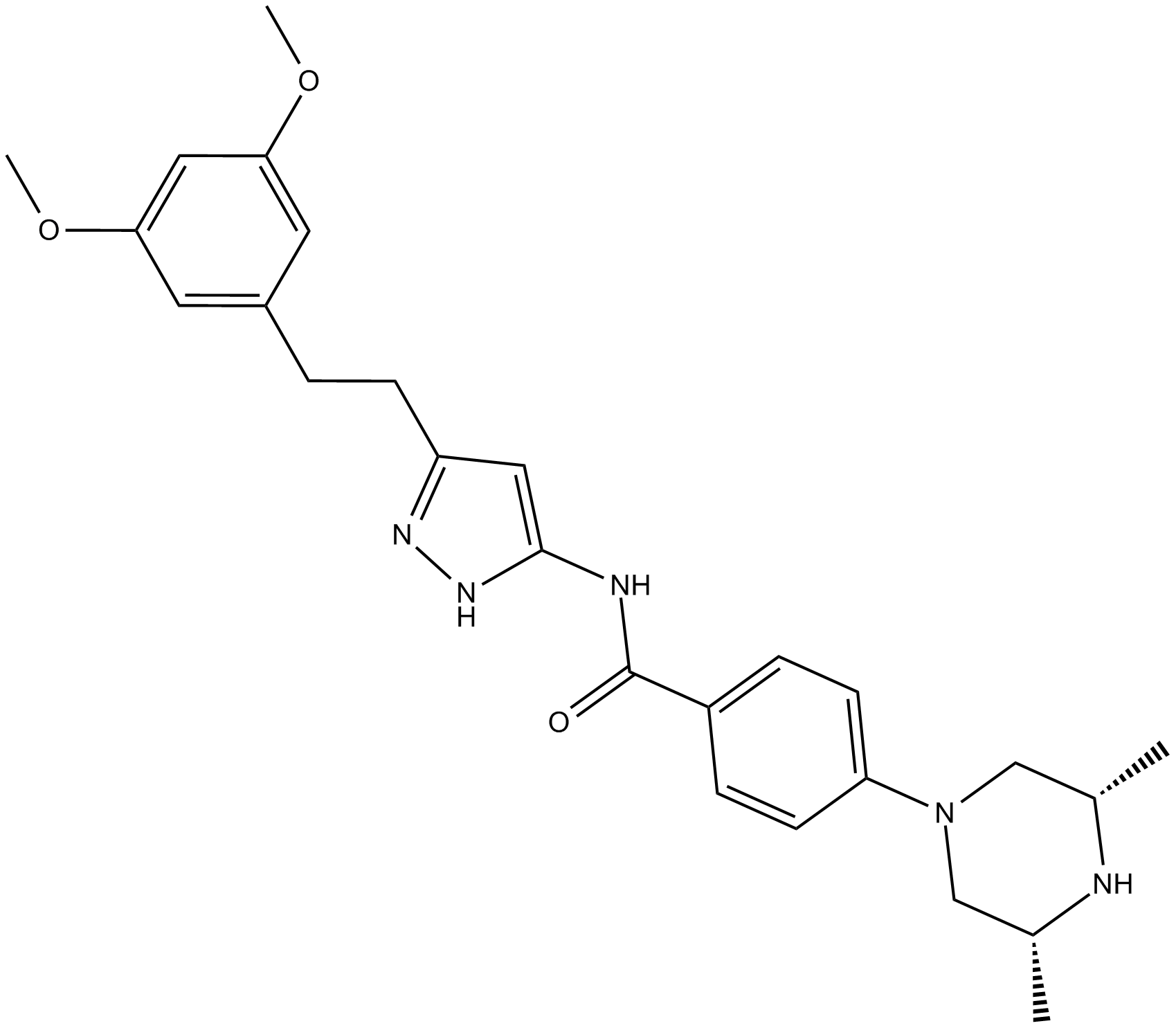 A8350 AZD4547Target: FGFRSummary: FGFR inhibitor
A8350 AZD4547Target: FGFRSummary: FGFR inhibitor

